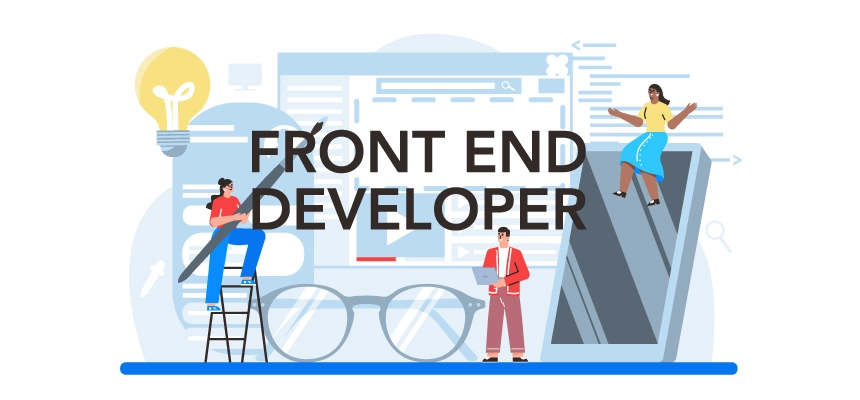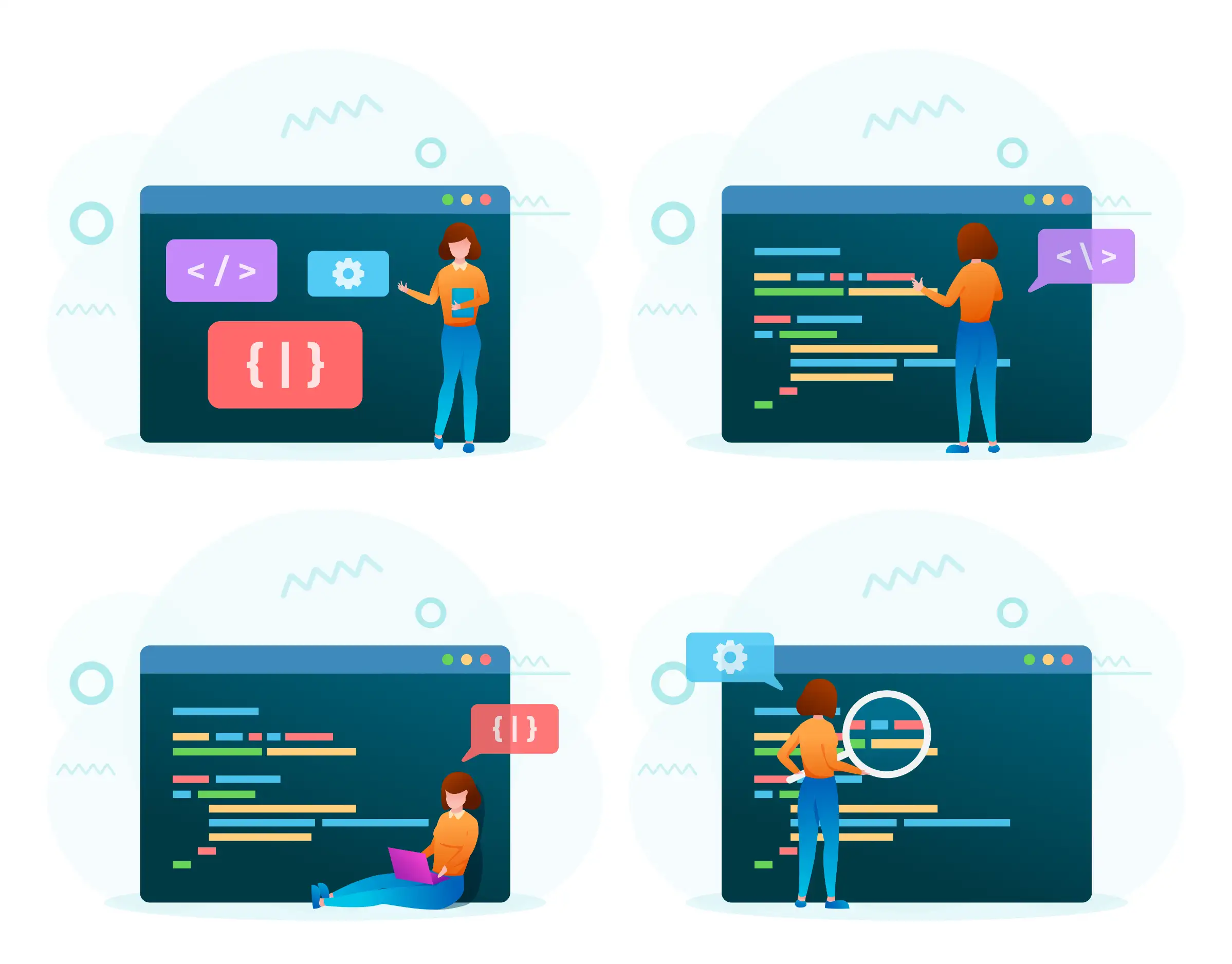Frontend frameworks are essential for generating visually appealing and dynamic user interfaces. Keeping current with popular frameworks is critical for their exceptional functionality, performance, and usability. This post examines the top ten front-end frameworks for 2023, providing in-depth research, comparison, and professional advice to assist you in selecting the right framework for the demands of your project.
Top 10 Frameworks: Overview
-
React:
React is a popular JavaScript package that allows for the reuse of user interface components thanks to its component-based architecture. Because of its quick virtual DOM rendering, unidirectional data flow, and extensive ecosystem of libraries and tools, it has gained significant industrial use.
-
Angular:
Angular is a full-featured front-end framework that offers a complete answer for creating big apps. Because it contains capabilities like dependency injection, two-way data binding, and a powerful CLI, it is appropriate for complicated applications needing a solid design and scalability.
-
Vue.js:
Vue.js is an advanced JavaScript framework that shines in simplicity and usability. It enables developers to implement its capabilities gradually, making it suited for both small and large-scale applications. Vue’s appeal stems from its responsive structure and seamless interaction with current applications.
-
Ember.js:
Ember.js follows a convention-over-configuration approach and emphasises developer productivity. It provides a strong set of conventions and tools for building ambitious web applications, making it a good choice for projects that require structure, stability, and efficiency.
-
Svelte:
Svelte is a lightweight framework that compiles components at build time, resulting in highly efficient and performant applications. Its simplicity, small bundle size, and ability to write expressive code make it a compelling choice for building fast and optimised user interfaces.
-
Preact:
Preact is a lightweight alternative to React with a similar API and impressive performance. Its small size enables fast rendering and makes it a convenient choice for converting React projects. With Preact, developers can create sleek user interfaces without sacrificing functionality. It also benefits from an active community that provides various plugins and extensions to enhance its capabilities.
-
Next.js:
Next.js is a React-based framework designed for server-rendered applications. It includes various useful capabilities, including automated code splitting, server-side rendering, and static site-building. Next.js enables developers to design high-performance applications that are optimised for search engine visibility and can easily scale to manage increased traffic demands by exploiting these capabilities.
-
Gatsby:
Gatsby is a static site generator that enables developers to build blazing-fast websites. It leverages modern web technologies, such as GraphQL and React, to create optimised and SEO-friendly static sites. Gatsby’s plugin ecosystem and seamless integration with headless CMSs make it a powerful tool for content-driven projects.
-
Polymer:
Polymer is a declarative syntax for designing bespoke elements that focuses on web component standards and reusability. It promotes component-based development and integrates well with current projects. Polymer’s compatibility with modern browsers makes it an enticing alternative for developers looking to harness web components for increased reusability and efficiency.
-
Stencil:
Stencil is a framework that is driven by a compiler and focuses on creating reusable web components. It performs well in terms of performance and encapsulation, making it an excellent choice for creating component libraries or integrating components into existing projects. Developers may utilise Stencil to construct efficient and modular architectures that result in rapid rendering and outstanding user experiences.
Comparison of the Top 10 Frameworks
-
Performance
When selecting a framework for your project, it’s vital to consider factors like rendering speed, optimisation techniques, and bundle size. The framework’s rendering speed directly impacts the user experience, while optimisation techniques and a smaller bundle size contribute to faster load times and improved performance.
-
Scalability
When considering a framework for large-scale projects and team collaboration, assess its scalability, collaborative features, and community support. Look for frameworks with robust architecture, efficient data handling, and seamless integration with build tools. Active community support provides valuable resources and plugins to aid in project development and problem-solving.
-
Learning Curve
Evaluate the learning curve and assess your team’s skills when considering a framework. Choose one that aligns with their expertise for efficient development, while also considering opportunities for skill growth. Striking a balance between familiarity and learning new technologies is essential in selecting the proper framework for your team.
-
Community Support
When evaluating frameworks, it’s crucial to examine the size, activity, and helpfulness of their respective communities. A vibrant and supportive community can offer a wealth of resources, documentation, and assistance when encountering development challenges. Access to forums, tutorials, and online communities further enhances the value of community support in making an informed framework choice.
-
Ecosystem
Consider the framework’s ecosystem, including the availability of libraries, tools, and plugins. A robust ecosystem offers ready-made solutions for common development tasks, saving time and effort. An active and engaged community ensures ongoing support, updates, and improvements for the framework.
-
Testing and Documentation
Evaluate the availability and quality of testing tools and comprehensive documentation for each framework. Well-documented frameworks with reliable testing tools can streamline development and improve code quality.
-
Compatibility and Integration
Examine the framework’s interoperability with your project’s other technologies and existing systems. Integration with popular libraries, frameworks, and APIs can greatly save development time and effort, allowing for a more efficient workflow.
How to Choose the Best Framework for Your Project:
-
Identify Project Requirements:
Understand your project’s specific needs and goals. Consider factors such as project size, complexity, performance requirements, and team expertise.
-
Evaluate Framework Suitability:
Match the features and strengths of each framework to your project requirements. Consider factors such as performance, scalability, flexibility, ease of use, and community support.
-
Consider Developer Experience:
Assess your team’s familiarity and expertise with specific frameworks. A framework that aligns with your team’s skill set can accelerate development and reduce learning curves.
-
Analyse Project Scalability:
Determine whether the structure can allow future development and changing needs. For long-term sustainability, consider modularity, extensibility, and community support.
-
Optimisation and performance: :
Check how effectively each framework handles performance-enhancing strategies like code splitting, lazy loading, and caching. Select a framework that is compatible with the performance objectives of your project.
-
Community and Support:
Research the size, activity, and responsiveness of the framework’s community. Active communities often provide valuable resources, tutorials, and support forums to help overcome challenges.
-
Testing and Documentation:
Consider the availability of testing tools and comprehensive documentation. Well-documented frameworks with robust testing support can streamline development and ensure code quality.
-
Compatibility and Integration:
Examine how well the framework combines with other technologies or existing systems in your project. Choose a framework that interfaces easily with your preferred tools, libraries, and APIs.
Conclusion
Making the best front-end framework choice for your project is crucial because it can affect development’s speed, scalability, and usability. This post examined the top 10 frontend frameworks for 2023, offering an overview, in-depth comparison, and crucial advice for choosing the ideal framework for the particular requirements of your project. You may make an informed choice that positions your project for success in the constantly evolving field of web development by taking into account aspects like project requirements, framework suitability, developer experience, scalability, performance, community support, and compatibility.
Please feel free to get in touch with Sanmark Solutions for clear assistance if you need more support. With our extensive knowledge in this industry, we are ready to assist you.
Feature image source: https://www.freepik.com/free-vector/_25579683.htm

